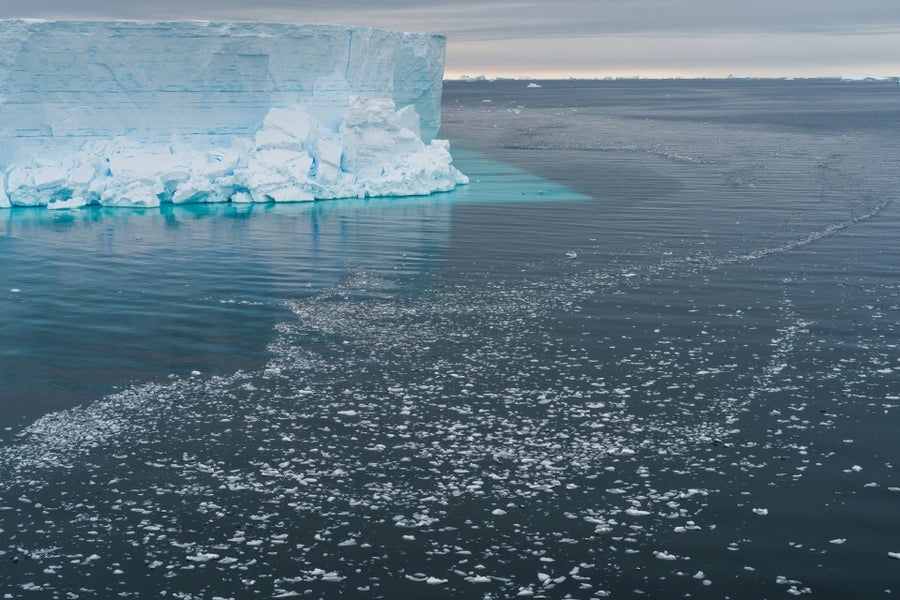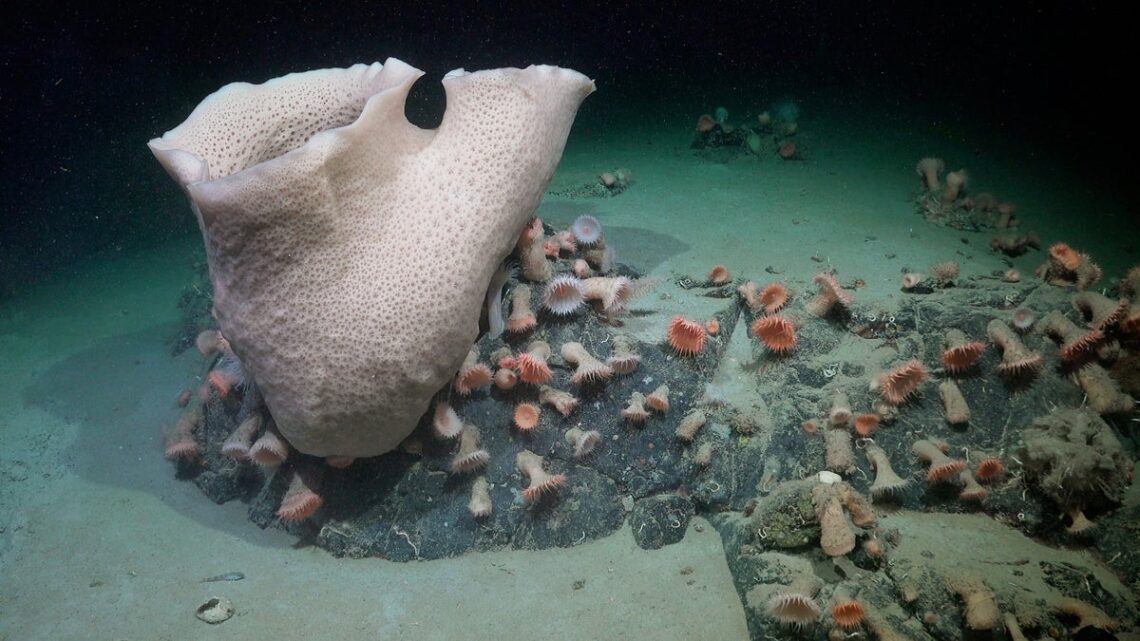Stunning Antarctic Sea Creatures Discovered after Iceberg Breaks Away
A calving iceberg exposed a region that never before had been seen by human eyes, revealing a vibrant, thriving ecosystem
A large sponge, a cluster of anemones, and other life is seen nearly 230 meters deep at an area of the seabed that was very recently covered by the George VI Ice Shelf in Antarctica. Sponges can grow very slowly, sometimes less than two centimeters a year, so the size of this specimen suggests this community has been active for decades, perhaps even hundreds of years.
ROV SuBastian/Schmidt Ocean Institute
In H. P. Lovecraft’s chilling science-fiction novella At the Mountains of Madness, a group of researchers uncovers the ruins of an ancient alien civilization while exploring beneath Antarctica. Now a real team has investigated what lies beneath some of the frozen continent’s floating ice, and its findings are certainly otherworldly.
Scientists onboard the Schmidt Ocean Institute’s research vessel Falkor (too) sailed to Antarctica to study the nearby seafloor, the creatures that live there and the way climate change is affecting Antarctic ice and the ecosystems that evolved around it. But their plan was sidetracked after an iceberg the size of Chicago broke away from a nearby ice shelf in Bellingshausen Sea on January 13.

The ice front left behind where the iceberg calved off in the Bellingshausen Sea.
Alex Ingle/Schmidt Ocean Institute
On supporting science journalism
If you’re enjoying this article, consider supporting our award-winning journalism by subscribing. By purchasing a subscription you are helping to ensure the future of impactful stories about the discoveries and ideas shaping our world today.
That event presented an opportunity that was too good to pass up: the chance to explore the seafloor below the iceberg’s original location—like overturning a rock or log in the woods to see what creatures lie hidden…
Read the full article here

